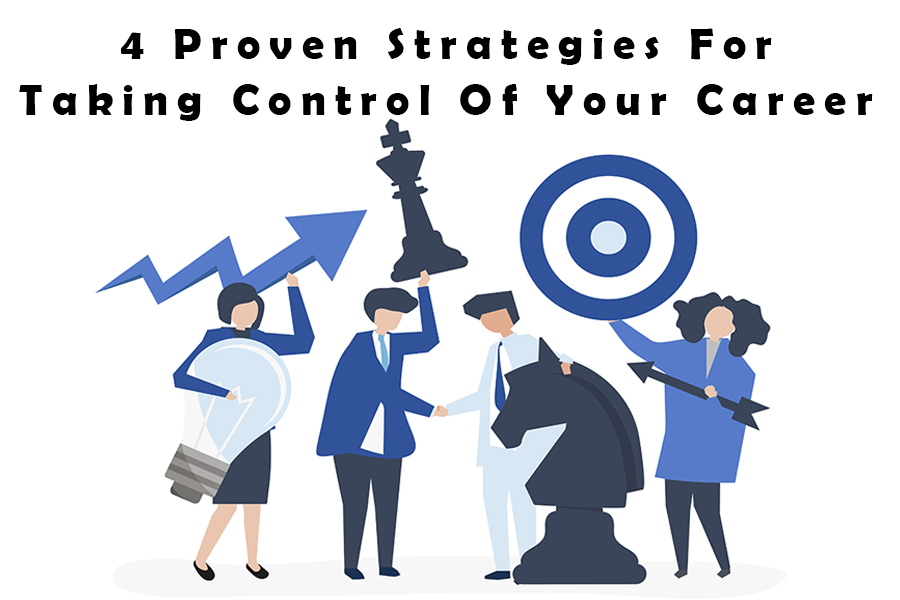
Have you ever felt you were falling behind in your career but had no idea how to take the next step to advance it?
The signs are usually right in front of you. If you are experiencing a lack of interest or motivation in taking on more job responsibilities or getting to the next level in your current situation, your career is probably already stagnating and falling behind.
The feeling is all too common in today’s disconnected “career nomad” era as it is often difficult to know where to find the right advice or how to get constructive direction to change your situation. However, the inverse may actually be true.
As Gary Burnison, CEO of Korn Ferry and New York Times best-selling author shares in his new book, Advance: The Ultimate How-To Guide for Your Career, “You may think that getting ahead is 90 percent what others can do for you. Wrong! That 90 percent is what you can do for yourself and for others.”
“Professionals need to get themselves ready for the next job and open the door to their next opportunity,” says Burnison. “But the sad fact is most people spend more time doing research when buying a flat-screen TV or a washing machine than thinking about how to get ahead in their careers. To get that job, to land that promotion or to get ahead – in a time when the rules are changing dramatically – people need to take control. No one is coming to the rescue.”
Burnison recommends three basic steps to start taking control of your career: “First, it starts with you—with greater self-awareness of your strengths, weaknesses, and motivation. But, second, it’s not about you. Instead, you need to develop emotional intelligence and interpersonal skills to work more effectively with others—especially that difficult boss or those annoying coworkers. And, third, if you really want to earn more, you need to learn more—becoming a lifelong learner.”
Getting started is often the most difficult part. Burnison crafted and recommends the MORE approach. Applicable to everyone, from recent college graduates to senior executives, it’s an effective, organized strategy to reinvigorate your current work environment or plan for a career move. It starts with you but it's not about you.
- M – Meet face-to-face with your boss to initiate ongoing discussions about goals, priorities, and how you can contribute to team success. Performance “isn’t a once-a-year task, so don’t depend on a one-time summit meeting with your boss at performance-review time. You need to have an on-going conversation about deliverables.” So don’t be shy. The responsibility rests with you and not your boss.
Part of this process, which is the “what you can do for yourself” strategy, is taking a self-inventory. You need to be AWARE. Another Burnison acronym, it stands for for the five things you need to do to take control from A-avoiding the brick wall, W- waking up to your blind spots, A-assessing your traits and drivers, R- rating your competencies, and E- expressing your experiences through the sum total of your accomplishments.”
To better know your traits, Burnison recommends short self assessments tests, some derived from Korn Ferry. Other resources include taking self-administered behavioral assessments. Predictive Index offers one, for helping you understand yourself and where you best fit in your organization as everyone has different go-to-war business skills. What’s critical is finding your talents and where you best fit to maximize your contributions.
- O – Own your objectives of what you’re going to deliver and when, to become an outlier in performance – and indispensable to the boss. Get to know your boss (including such personality types as the manipulator and the micromanager), and their management style, so you know how to effectively manage your game plan. This puts you on the offense, versus the defense, by focusing on achieving your boss’s short-term and long-term goals. It’s an effective way to make an “immediate impact. You and your boss are now on the same team and, together, moving toward the goal line” and mutual objectives.
- R – Research the market to find out what your position is worth, instead of merely assuming you’re underpaid. Burnison advises, “Do your homework. Don’t just assume you are underpaid because you want or need more money. Your boss just isn’t that into your salary. Your boss is focused on team performance (and his or her own paycheck).” The more you devote your talents and efforts to elevating the entire team and company performance, the more likely you are to be rewarded. Remember, “if you want a larger-than-average pay raise you need to do more-not just meeting but exceeding expectations.”
- E – Envision your end game of taking on new challenges and opportunities to learn and grow, as you progress from job to job. One caveat. Don’t make the wrong move and assume the “grass is always greener” syndrome. Burnison warns of “look before you leap” and “beware of the competing job offer” to avoid derailing your career. “It’s a strategy that works sometimes as long as you are prepared to show evidence that it is real as your company may not being able to afford you, or if you aren’t worth the money, your boss may shake your hand and wish you well.”
The MORE approach is all about taking control. However, according to Burnison it is not “something you get. It’s about the value you bring and being rewarded for it.” When you focus your efforts on “stretching yourself”, contributing to the team and company, you may start to see your career advancing and ultimately earning more. So maybe your new career mantra in 2020 and beyond is “what can I do for myself and for others.”